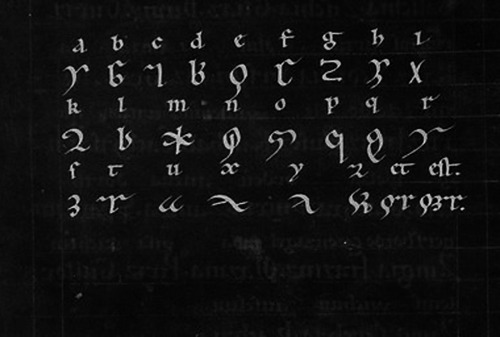When The Boundaries Between The Inner And The Outer Dissipate, The Ego Returns Home, Back Into Its Original
When the boundaries between the inner and the outer dissipate, the ego returns home, back into its original unity. In imagination—phantasy—the thin line between the inner and the outer begins to fade: the I of the abyss is the silent dialogue the soul has with itself. The same is true for the dreaming soul, asleep within its original lost unity, recovered, reconstituted—even if only for a moment—a confluence between the inner and outer is subsumed within the underworld. In imagination—the artist of the dream—there is a contraction of the ego back into its interior, bringing the wealth of its experiences to bear upon the soul.
Jon Mills, The Unconscious Abyss: Hegel’s Anticipation of Psychoanalysis
More Posts from Sigilheart and Others


"Burning Rhapsody"
Vampire Night (Namco/Sega/WOW Entertainment - PS2 - 2001)

David Allen Hulse, The Eastern Mysteries—An Encyclopedic Guide to the Sacred Languages & Magickal Systems of the World




Alchemical drawings from Sapientia veterum philosophorum, sive doctrina eorumdem de summa et universali medicina (18th c.) BnF

Hildegard von Bingen’s 23 litterae ignotae, letters for her constructed mystical language Lingua Ignota, ca. 1200.

“There is a harmonic relationship that resonates between all the spheres of space, from the smallest to the largest. Think of all the protons vibrating and resonating with each other. Think of all the electrons vibrating and resonating with each other. Then think of all the planets, all the solar systems, all the stars, the galaxies, the superclusters that vibrate and resonate with each other in the universe. Imagine then the number of octaves existing between the proton and the universe. We are very clearly bathed in the music of the spheres.”
Nassim Haramein
-
 ohlalunette liked this · 2 months ago
ohlalunette liked this · 2 months ago -
 chryso-poeia liked this · 2 months ago
chryso-poeia liked this · 2 months ago -
 sigilheart reblogged this · 2 months ago
sigilheart reblogged this · 2 months ago -
 deadlyydollz liked this · 2 months ago
deadlyydollz liked this · 2 months ago -
 augustin111 liked this · 2 months ago
augustin111 liked this · 2 months ago -
 pridi-dala-ti-bom-cvet liked this · 2 months ago
pridi-dala-ti-bom-cvet liked this · 2 months ago -
 shes0rand0mnplain reblogged this · 2 months ago
shes0rand0mnplain reblogged this · 2 months ago -
 shes0rand0mnplain liked this · 2 months ago
shes0rand0mnplain liked this · 2 months ago -
 feweggo liked this · 2 months ago
feweggo liked this · 2 months ago -
 tanab0bana reblogged this · 2 months ago
tanab0bana reblogged this · 2 months ago -
 primadvxtu liked this · 2 months ago
primadvxtu liked this · 2 months ago -
 stephfineee reblogged this · 2 months ago
stephfineee reblogged this · 2 months ago -
 solianapaeris liked this · 2 months ago
solianapaeris liked this · 2 months ago -
 m-00kieshouse reblogged this · 2 months ago
m-00kieshouse reblogged this · 2 months ago -
 m-00kieshouse liked this · 2 months ago
m-00kieshouse liked this · 2 months ago -
 thenextbestamericnrecord reblogged this · 2 months ago
thenextbestamericnrecord reblogged this · 2 months ago -
 saturniinne liked this · 2 months ago
saturniinne liked this · 2 months ago -
 gypsophllia reblogged this · 2 months ago
gypsophllia reblogged this · 2 months ago -
 sensuelledoll reblogged this · 2 months ago
sensuelledoll reblogged this · 2 months ago -
 tanab0bana liked this · 2 months ago
tanab0bana liked this · 2 months ago -
 serpent-honey liked this · 2 months ago
serpent-honey liked this · 2 months ago -
 111-444-222 liked this · 2 months ago
111-444-222 liked this · 2 months ago -
 sophisticatedexuberance liked this · 2 months ago
sophisticatedexuberance liked this · 2 months ago -
 chroniclesofnadia111 reblogged this · 2 months ago
chroniclesofnadia111 reblogged this · 2 months ago -
 wolkenfee111 reblogged this · 2 months ago
wolkenfee111 reblogged this · 2 months ago -
 wolkenfee111 liked this · 2 months ago
wolkenfee111 liked this · 2 months ago -
 psyche-of-epiphany liked this · 2 months ago
psyche-of-epiphany liked this · 2 months ago -
 thedawnbreaksthroughtheshadows liked this · 2 months ago
thedawnbreaksthroughtheshadows liked this · 2 months ago -
 twlvv liked this · 2 months ago
twlvv liked this · 2 months ago -
 thedoll333 reblogged this · 2 months ago
thedoll333 reblogged this · 2 months ago -
 parasiempretumelancolia reblogged this · 2 months ago
parasiempretumelancolia reblogged this · 2 months ago -
 thedoll333 liked this · 2 months ago
thedoll333 liked this · 2 months ago -
 murakamijeva-muza reblogged this · 2 months ago
murakamijeva-muza reblogged this · 2 months ago -
 oqalite liked this · 2 months ago
oqalite liked this · 2 months ago -
 miseriacantares liked this · 3 months ago
miseriacantares liked this · 3 months ago -
 holydance333 liked this · 3 months ago
holydance333 liked this · 3 months ago -
 iivonae reblogged this · 3 months ago
iivonae reblogged this · 3 months ago -
 tensegold liked this · 3 months ago
tensegold liked this · 3 months ago -
 mar344 liked this · 3 months ago
mar344 liked this · 3 months ago -
 92tagada liked this · 3 months ago
92tagada liked this · 3 months ago -
 omni-farious liked this · 3 months ago
omni-farious liked this · 3 months ago -
 hella-wowser liked this · 3 months ago
hella-wowser liked this · 3 months ago -
 artifacts-and-energies liked this · 3 months ago
artifacts-and-energies liked this · 3 months ago -
 cutiejjk reblogged this · 3 months ago
cutiejjk reblogged this · 3 months ago -
 cutiejjk liked this · 3 months ago
cutiejjk liked this · 3 months ago -
 thinkwaves liked this · 3 months ago
thinkwaves liked this · 3 months ago -
 stuff-lulu liked this · 3 months ago
stuff-lulu liked this · 3 months ago





